Five Vermont men have been sentenced to a total of 291 years and nine months in prison for the July 20, 2016 murder of a Union Island man and possession of firearm to commit murder.
However, the men would only serve an aggregate of 93 years and nine months, as the sentences will run concurrently.
Justice Brian Cottle handed down the sentences on Brydon Joseph, 39, Shemai Joseph, 31, Courtney Joseph, 34, Lennox Andrews, 29, and Andres Cuffy, 27, at High Court No. 1 on Friday.
Brydon was sentenced to 61 years and nine months in prison, but will only serve a further 37 years, 2 months and 25 days in prison, representing the time remaining on his sentence for murder.
He, like all the other men, was also sentenced to 18 years and nine months in prison for the firearm offence.
However, this will run concurrent to the murder sentence and he has spent 5 years, nine months, and 5 days on remand.
Shemai, who was sentenced to 58 years and nine months, will serve a further 34 years, 2 months, and 25 days, having spent 5 years, 9 months and 5 days on remand.
Courtney, who was sentenced to 61 years and nine months, will serve a further 37 years, 4 months, and 23 days, having spent 5 years, 7 months, and 7 days on remand.
Andrews was sentenced to 55 years and nine months, and will remain in prison for 31 years, 3 months, and 12 days more, having spent 5 years, 8 months, and 18 days behind bars awaiting his trial.
Cuffy, who was sentenced to 53 years and nine months, will see freedom after 29 years, 2 months, and 29 days, having already served 5 years, 9 months, and 1 day on remand.
The sentences were passed two weeks after the men’s lawyers — Ronald “Ronnie” Marks, Patina Knights, Duane Daniel, Israel Bruce, and Euchrista St Hilaire Bruce-Lyle — asked the court to hand down lighter sentences by not adopting a 40-year starting point, as the Crown had suggested.
Director of Public Prosecution (DPP) Sejilla McDowall, Assistant DPP Tammika Da Silva-Mc Kenzie and Maria Jackson-Richards represented the Crown.
The men were convicted after what Justice Cottle described as a “full and prolonged trial” during which they chose not to testify or call any witnesses on their behalf.

The crime
The judge, presenting the facts of the case as emerged during the trial, said that about 11 p.m. on July 20, 206, the sound of gunfire from multiple weapons rang out in Vermont.
The noise came from an apartment on the lower level of Belle Gordon’s home.
After the gunfire ended, Gordon and her son went to the apartment, where they met Jones’ body.
He had been shot multiple times with more than one firearm and had chop wounds to his head and back.
The five men who would be convicted and two others — Malcolm Pollin and Mark Weekes — were arrested and police conducted electronic interviews with them.
All of the men except Lennox Andrews denied involvement in the killing.

Andrews told police he was present when the other four convicted men and others agreed to kill Jones.
Andrews, however, minimised his role by saying he acted as lookout while the other men armed themselves, dressed in dark-coloured clothing and went to kill Jones.
Justice Cottle said that during the trial, one witness testified to seeing Andrews among five men going in the direction of Gordon’s home shortly before hearing gunshots in that area.
The witness said that at least one of the men had a gun
Shortly after the shots rang out, another witness saw the three Josephs and another man running from near Gordon’s home towards where Brydon and Courtney lived.
Gordon saw four of the convicted men, including Cuffy, who was carrying a long firearm, coming from her yard immediately after the sounds of shooting.
Gordon told the court she was able to see by the light of the moon and a streetlight
Andrews was seen standing a few feet from their home, looking in the direction the house.
The autopsy concluded that Jones was shot multiple times using multiple firearms.
The pathologist recovered shotgun pellets and a lead projectile from another firearm from Jones’ body.
No evidence of torture
Justice Cottle noted that murder carries a maximum penalty of life imprisonment, while in the circumstances, possession of a firearm to commit an offence attracts a maximum sentence of 20 years.
He re-emphasised the aims of criminal punishment, namely retribution, deterrence prevention, and rehabilitation and the sentencing guideline, which allows departure in exceptional cases.
The judge noted that the prosecution did not seek a death sentence nor submitted that a whole life sentence was merited.
He reasoned that although this case involved apparent membership in a criminal gang and there was a degree of criminal planning, he felt that determinate sentences should be appropriate.
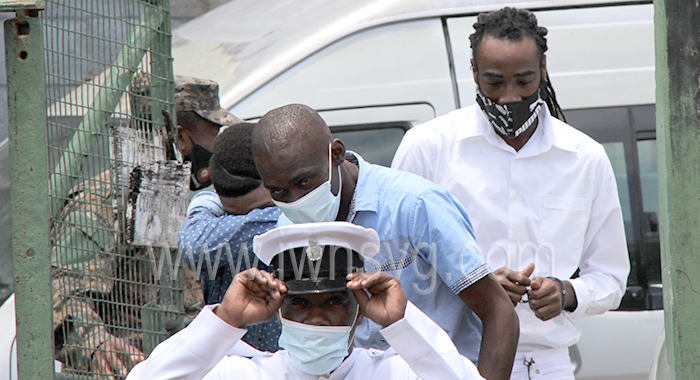
The case involved a murder and the use of multiple firearms, the judge pointed out, adding that he was content to adopt a starting point of 40 years, but took no aggravating or mitigating features into account in choosing this starting point.
The judge went on to outline the aggravating features of the murder. He pointed out that it occurred in Gordon’s home, was unprovoked, and more than one firearm and at least one bladed weapon were used.
The slaying involved some degree of planning as the men armed and outfitted themselves to carry out the crime.
They approached the home by a circuitous route to minimise detection and the planning began the same night when Pollin saw Jones in the village.
There was not a significant degree of premeditation and planning, the judge said.
He did not consider as aggravating the fact that the killing took place in presence of children or that the location rendered the Jones particularly vulnerable.
He said there was no evidence of torture.
The prosecution in asking for the 40 years starting point had said that Jones was tortured before he was killed.
The judge found no mitigating features of the killing.
In considering the defendant, the judge noted their biographical information and social background.
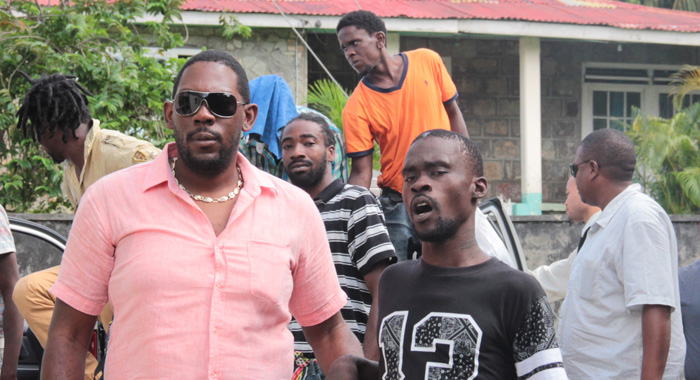
He noted that Brydon was 33 at the time and had several previous convictions.
One of them is for wounding, but as all of the convictions are more than a decade old, the judge saw them as spent and did not consider them in passing sentencing.
Shemai was 25 at the time and had no previous and the court found no aggravating feature of him personally.
Courtney was 28 and had one previous conviction for unlawful possession of ammo, stemming from a search conducted at his home during the investigation of the murder.
His other convictions are spent and not relevant and were ignored, Justice Cottle said.
However, the conviction for the unlawful possession of ammunition was considered an aggravating feature that the court took into account when handing down his sentence.
Andrews, at 23, was the second youngest of the group and had no relevant conviction. The court viewed him as having no personal aggravating features.
Cuffy was 21 and had no previous.
Mitigating features of offenders
Regarding the factors mitigating on behalf of each offenders
Brydon was older than the other defendants.Justice Cottle said that at the trial, he displayed no remorse for his role. This was not taken into account as an aggravating feature but it did nothing to persuade the court toward mitigation. Justice Cottle said there is always the hope that a prisoner would be rehabilitated by the completion of his sentence, but said this was less of a consideration as it relates to Brydon.
The social inquiry report did not paint a flattering picture of Brydon. Residents of Vermont, who spoke to the social worker on condition of anonymity, regarded him as a troublemaker. They said the community feels safer without him present and residents are conformable and willing to walk around the village at night.
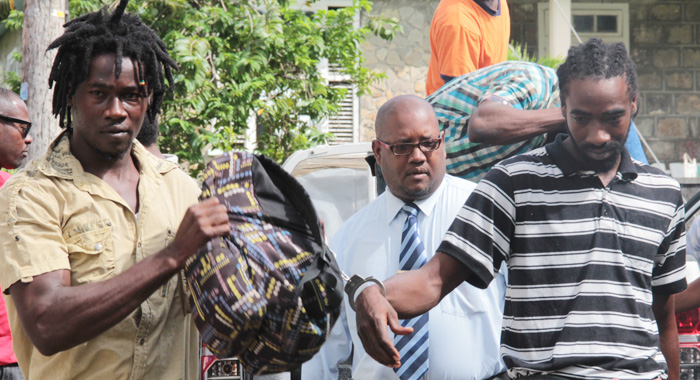
Shemai Joseph
Given his relative youthfulness and clean slate, he has every prospect of rehabilitation and this is a mitigating feature, Justice Cottle said.
He said the trial produced no evidence that Shemai was present at the planning of the murder. One witness said he was not one hundred per cent sure that he identified Shemai but was confident that his identification was correct.
The jury accepted the witness’s identification, Justice Cottle said.
Prison authorities said that since his incarceration Shemai has behaved well, assisting in the kitchen and bakery.
Courtney Joseph
He was 28 at the time of the killing, had a difficult upbringing and had difficulty escaping the shadow cast by his “notorious” father, Malcolm Pollin.
His mother swore an affidavit saying he was a loving person manipulated by his father, who was absent during his formative years.
This yearning for that male role model made Courtney vulnerable to his father’s influence and the judge bore this in mind when evaluating him.
Pollin’s lifestyle remained a negative influence in Courtney’s life and the community judged him based on this.
Andrews
He was still very young at the time of the offence and had aspirations at soccer and trained with Keith Ollivierre.
He had an 8-year-old son and a 6-year-old daughter at the time of offence.
He gave police a detailed account of the plot to kill Jones and the part he was to play in the murder.
Andrews was not convinced that acting as a lookout where there was an agreement to kill was enough to convict him for the murder.
He told the social worker preparing the report that he did not wish to speak about the murder and that he was not in the house when it was done.
He said he only gave the statement because the police promised that they would use him as a Crown witness, a claim that the police rejected.
The judge felt that Andrews had accepted some responsibility for his action, and said this was to his credit.
Further, he had relevant criminal convictions and was released during the investigation before being charged. During his release, he did not seek to flee the jurisdiction or interfere in the investigation.
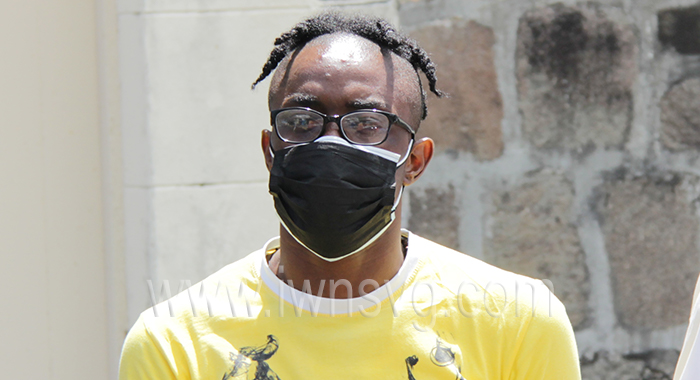
Cuffy — He was 21 at the time of the crime and was the youngest of the group. Justice Cottle felt that he had the best prospects of rehab.
He had dropped out of secondary school after stealing groceries. He said that after his offence, he was too ashamed to continue his education.
Adjustments to sentences
After weighing the aggravating and mitigating features of the offences and the offenders, the court adjusted the starting sentences, as follows:
Brydon Joseph — Increased to 43 years. There was nothing in his personal circumstances that merited a reduction.
Shemai Joseph — Increased to 43 years. However, his personal mitigating features justified a reduction, also of three years, returning the sentence to 40 years.
Courtney Joseph — Increased to 43 years. No further adjustment made as his personal aggravating and mitigating features cancelled out each other.
Lennox Andrews —Because of his relative youth and prospect for rehabilitation, the judge adopted a starting point of 37 years. The judge noted that Andrews’ lawyer had said Andrews had played a lesser role in that he was only there during the planning and agreed to serve as look out and did not pull the trigger or inflict any chops. The court, however, felt that Andrews was fully a part of the joint enterprise, as the jury’s verdict determined. “He knew the mission was to slay Kamau Jones and that guns and bladed weapons were to be used,” Justice Cottle said.
Andres Cuffy — The court adopted a starting point of 35 years. He was the youngest offender. The judge noted it was his first offence, though a very serious one. The court felt he had the best chance of rehabilitation.
Justice Cottle said there was no credit for an early guilty plea. He noted that if the men had pleaded guilty, they could have benefited from a discount of one-third of the sentence now being imposed.
18 years, nine months for firearm
On the firearm charge, Justice Cottle noted that multiple firearms were used, including firearms that were concealed. Firearms were discharged, multiple gunshot injuries were inflicted and the victim died.
Under the guidelines, this is a category 1 offence of the highest consequences.
He said the crime involved apparent gang membership and was a group activity and there were more than two rounds of ammunition in the firearms.
These features place the offence at level A — the highest level of seriousness.
He chose a starting point of 18 years and nine months.
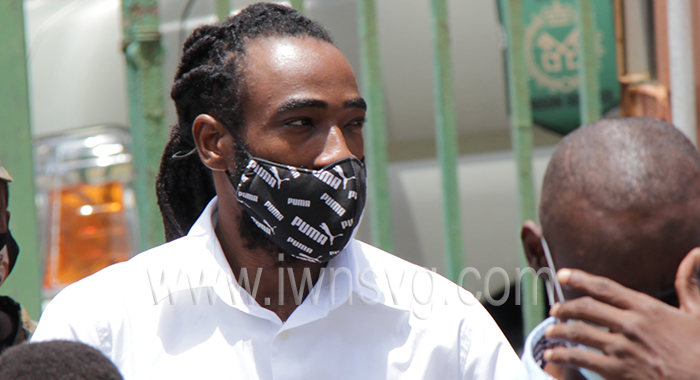
Justice Cottle noted that the offence was committed during the course of a murder but said he could not take into account on the firearm charge the aggravating and mitigating features considered in sentencing the men on the murder charge.
The judge said that while the offences were separate, to take the same factors into account could introduce an element of double counting.
Justice Cottle, however, noted that the firearms were never recovered and said he would not adjust the starting point.
The offences were part of a single criminal act, and therefore, the court imposed concurrent sentences.
Each of the offenders was sentenced to 18 years and nine months on the firearm charge, with the time spent on remand to be deducted.
“I declare that I have kept that totality principle in mind. And I think the sentences reflect just punishment for the total criminality of the prisoners,” Justice Cottle said.




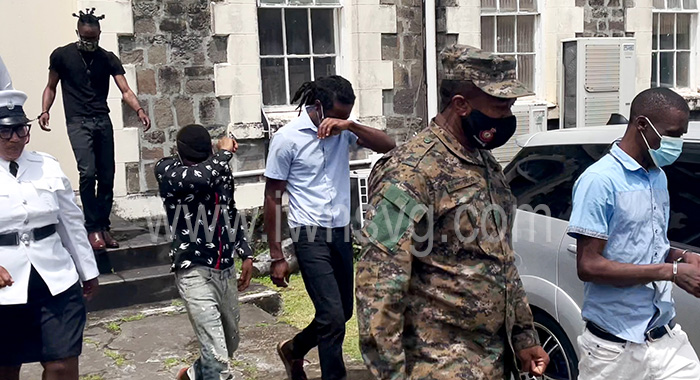


You do the crime you spend the time. However Mosaic law should have applied. An eye for an eye and a tooth for a tooth will be a deterrent.
Bad man badness get them 291 years behind bars. They are going to turn homosexual. No woman to lover dub with. Oh man,all men.
Perfect justice well almost they shoulda get more years behind bars. The judge must be totally fed up.
Well judged because it was a premeditation muddier